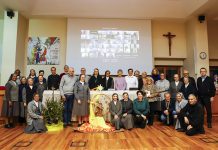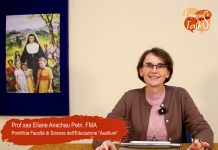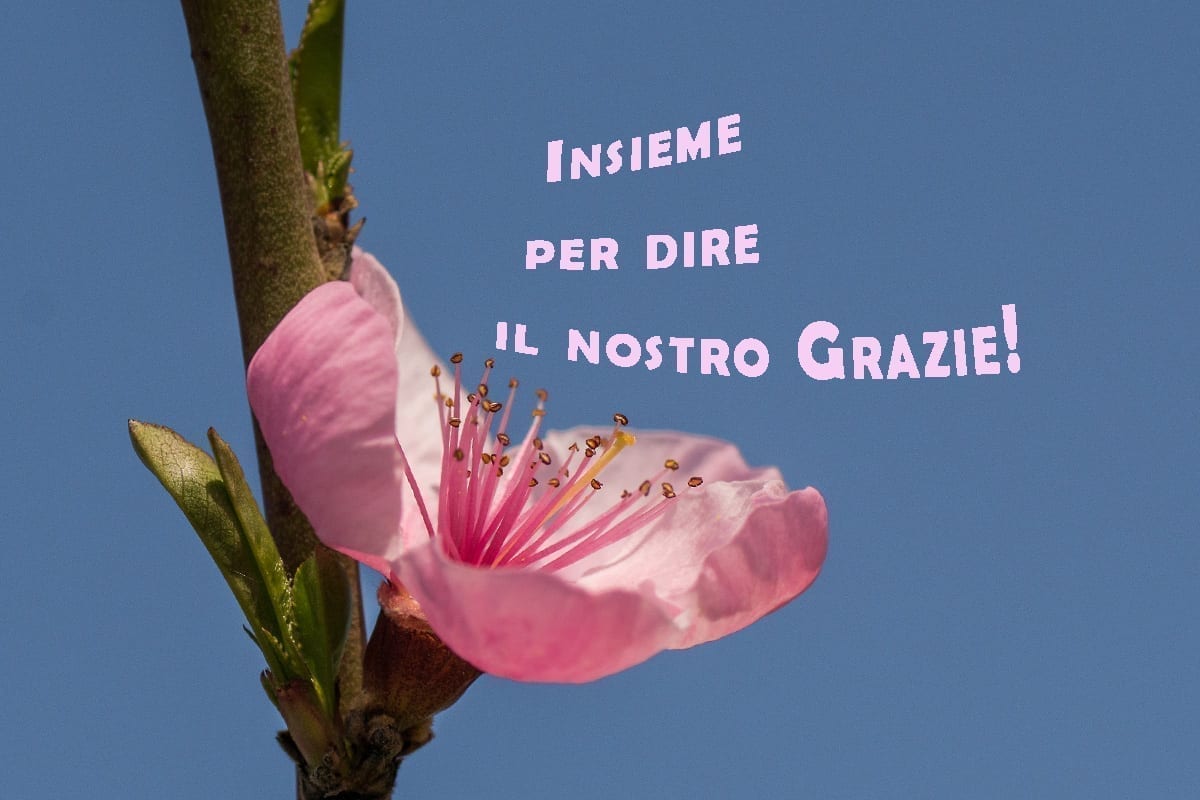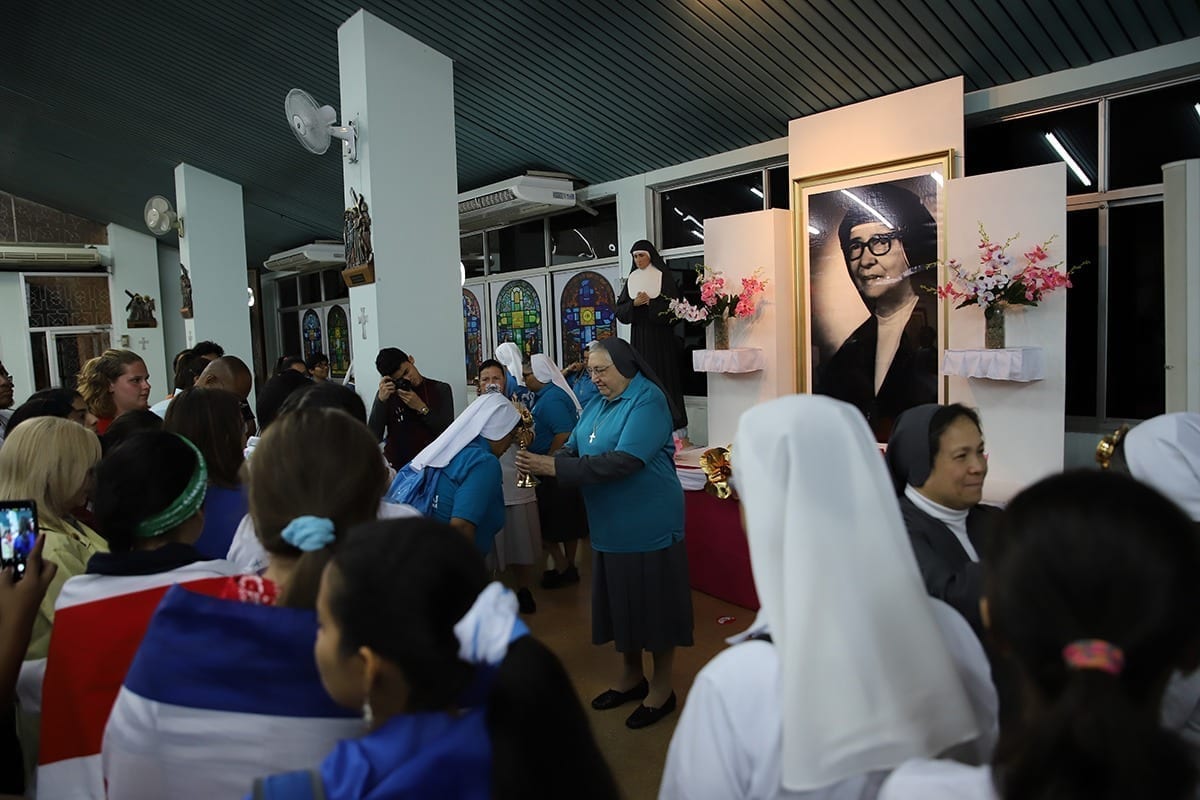Rome (Italy) On 24 May 2020 the Feast of Mary Help of Christians is celebrated in the whole world. It is especially felt in our Salesian realities throughout the world who prepare to live it with a ‘special’ Novena, in which all of humanity is entrusted to the Help of Christians for the end of the Pandemic Covid- 19.
Devotion to Mary Help of Christians was already widespread at the time of St. Pius V and spread following the victory of the Christians against the Turks in Lepanto (1571) and in Vienna (1683). The Feast of Mary Help of Christians on May 24, was fixed by Pope Pius VII after his release from Napoleonic imprisonment (1814). Don Bosco became an apostle of devotion to the Help of Christians in particularly difficult times for the Church, as he confided to the future Cardinal Cagliero in 1862: “Our Lady wants us to honor her under the title of Mary Help of Christians: the times are so sad that we need the Most Holy Virgin to help us to preserve and defend the Christian faith” (MB 7,334).
To express his gratitude to Mary Help of Christians Don Bosco built in 1868 a basilica named after her in Valdocco (Turin), and also wanted this act to be perpetuated as a ‘Living Monument’ by founding in 1872, together with Santa Maria Domenica Mazzarello, the Institute of the Daughters of Mary Help of Christians.
The Mother General of the FMA, Sr. Yvonne Reungoat, in Circular 995, highlights this special aspect of every FMA vocation.
“In our heart lives the joy of knowing that we are the ‘living monument of gratitude to Mary Help of Christians’ wanted by Don Bosco as ‘perennial gratitude for the singular favors obtained by such a good Mother’ (MB X, 600). Our Founder built it with ‘living stones’ that have a precise name: the name of each one of us. He wanted it to be dynamic, creative, constantly expanding, pervaded by an inner tension of growth, capable of affecting society and the Church, doing ‘great good’ to young people. (…) Like her, we too are called to live the joy of the Magnificat with humility, prolonging her presence in history. In fact, we too are called to be like her ‘helpers’ among the young people, with a gaze of predilection on those who are subject to various forms of poverty and who await hope and trust in life (cf. C 4 and 65).”
The Servant of God Mother Rosetta Marchese, in the Good Night given to the FMA of Vöcklabruck (Austria) on 4 October 1977, highlights the Marian dimension of the FMA Institute:
“That Don Bosco wanted our Institute to be a living Monument of his gratitude to Our Lady, are not just words. He wants to show us something that we must translate, achieve in our life (…). What is our nuance, our characteristic? It is this: gratitude, our love for Mary is a love of gratitude! The first time Don Bosco spoke of our Institute when he spoke of sisters, he really talked about it in this respect. It was one evening on May 24, I don’t remember which year, but four years before the foundation of the Institute, then in 69, in 67-68. In the courtyard there were the boys who sang, had recreation in the continuous protraction of the joy of the day and the Basilica was still illumined. Now it is lit by light bulbs, at that time it was lit by torches … and those torches were slowly going out. Don Bosco was with Fr. Bonetti on the balcony of his bedroom and they both watched, moved at that well-lit Basilica and the boys so full of joy still in the courtyard. Fr. Bonetti broke the silence and said: ‘Ah, Don Bosco, who would have said that we would have this beautiful Church, that we would have these beautiful feasts, and then this Church is truly a miracle of Our Lady.’ And Don Bosco replied, ‘It is true, this Church is a miracle of Mary and we can say that every stone of this Church says thank you to Our Lady!’ Then Don Bosco stopped and added: ‘But a stone monument is not enough to sing our gratitude to Our Lady. We will have a living monument.’ Fr. Bonetti looked at him, not understanding what Don Bosco meant. Don Bosco, realizing from Fr. Bonetti’s look that he had not understood his affirmation, continued: ‘Yes, we will have a living monument and this living monument will be the sisters.’ It was the first time Don Bosco had spoken of sisters.
And this means that when Don Bosco, following the inspiration of Our Lady, thought of founding an Institute, he thought of the hearts of virgins who would sing his thanks to the Our Lady. He felt that alone he would never be able to thank Our Lady for what she had done in his life and in the history of the Congregation he had founded and which was expanding more and more without his even knowing how. In order to find a way to express fervent gratitude to Our Lady, Don Bosco thought of consecrated hearts. And this is how we came to be, right from his heart. Each of us was present in the heart of Don Bosco through Mary’s inspiration, as a living thank you to Our Lady. Each of us is a Thank you to Mary, she is a Thank you from the heart of a saint. And while Don Bosco today in Heaven says his thanks to Our Lady, we say it on earth, with our life!”.




















